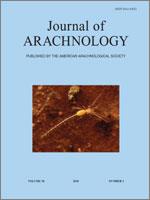In this paper we present a detailed study of the natural history of Gluvia dorsalis (Latreille 1817), a representative of the family Daesiidae, the only solifuge species known to occur in southwestern Europe. We studied its distribution, habitat preference, circadian activity, seasonal occurrence, burrowing, predatory and post-mating behavior, prey, fecundity, ontogenesis, and sexual dimorphism. Gluvia dorsalis occurs in lowlands across the entire Iberian Peninsula, preferring grassland or similar open-ground habitats with little summer rain. According to pitfall trap data, the species was active on the surface from May until the beginning of November. It is a nocturnal epigean predator, feeding principally on ants and spiders. However, under laboratory conditions, specimens captured and consumed a variety of arthropods. G. dorsalis seems to hide in underground burrows only when molting, overwintering, or laying eggs. Reproduction occurred in early summer, and females usually produced a single egg clutch containing, on average, 84 eggs, and died soon after. Our results indicate that the G. dorsalis is a biennial species. There was sexual dimorphism in several morphological structures that might be used for sex matching in juvenile instars.
How to translate text using browser tools
1 December 2010
Natural history of the Iberian solifuge Gluvia dorsalis (Solifuges: Daesiidae)
Martina Hrušková-Martišová,
Stano Pekár,
Pedro Cardoso
ACCESS THE FULL ARTICLE

The Journal of Arachnology
Vol. 38 • No. 3
December 2010
Vol. 38 • No. 3
December 2010
activity
Camel-spider
prey
reproduction
sexual dimorphism




